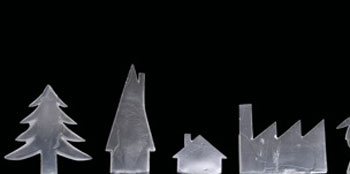
Image from Sweet Dreams Security website
From the BBC, an interesting story looking at the work of Matthias Megyeri’s Sweet Dreams Security:
“A German artist is trying to change the way people think about security, by replacing barbed wire with heart-shaped metal, and pointed railings with animal shapes. Matthias Megyeri… considers symbols of threat and fear, such as alarms and CCTV cameras.
He then turns them into things that make people feel happy, using bright colours and references to kitsch objects such as teddy bears and bunny rabbits.”
Aside from the kitschness (hey, I’m not one to criticise!), some of Matthias’ work touches on an interesting area pertinent to ‘built environment’ architectures of control: the ‘hidden agenda’ behind superficially pretty or aesthetically attractive designs:
“Examples of Mr Megyeri’s art include… glass fir trees embedded in concrete, designed to replace broken bottle shards, which are now illegal.
While they look delicate, the top of the fir tress is very sharp, to deter people from climbing the wall.“
This is reminiscent of Baron Haussmann‘s elegant wide Parisian boulevards (designed, partially at least, to be difficult for revolutionaries to barricade after the events of 1848): the visual style of a design incorporating a hidden control intention by its very architecture (see also ‘Making a sleek piece from a pig’s ear‘).
Can anyone think of more examples of this type of design thinking?